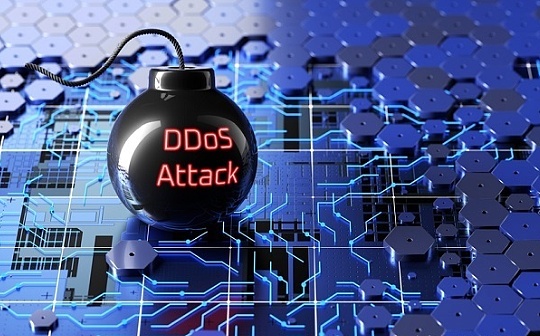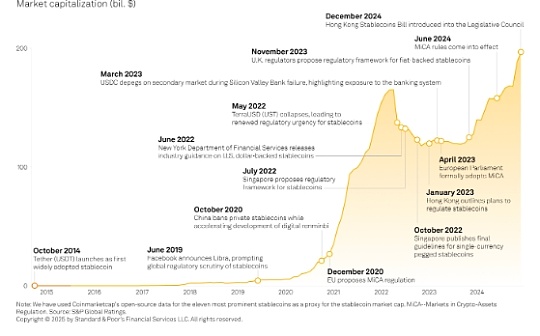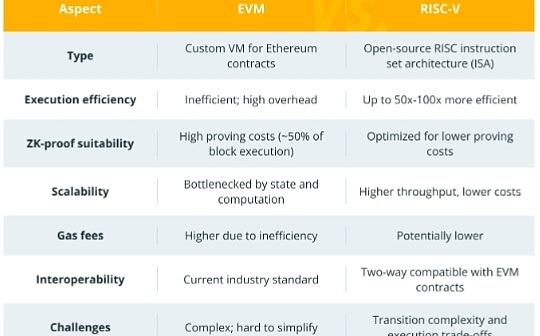
Author: Dilip Kumar Patairya, CoinTelegraph; Compiled by: Deng Tong, Bitchain Vision
1. What is a DDoS attack?
A distributed denial of service (DDoS) attack attempts to destroy a website, computer, or online service by sending large amounts of requests to a website, computer, or online service, exhausting its capacity and affecting its ability to respond to valid requests.
DDoS attacks involve hackers plugging malware into potentially thousands of internet-enabled devices (collectively, botnets) and prompting them to send a large number of requests to the target system at the same time.These infected machines are called robots or zombies and may be phones, desktops, servers, and even Internet of Things (IoT) devices.Attackers usually establish direct control over the robot by infecting the robot with malware without the victim’s knowledge.
The influx of incoming traffic makes the target system unable to respond to valid requests because the attack consumes too much bandwidth, processing power, or memory.In its first quarter 2024 DDoS threat report, Cloudflare noted that DDoS attacks overall increased by 50%, which is a shocking phenomenon.

2. Will blockchain networks suffer from DDoS attacks?
Attacking a blockchain network with a DDoS attack is theoretically feasible, although it is more difficult than targeting centralized systems such as websites or servers.Due to its decentralization, blockchain networks are essentially able to resist such attacks.
As a decentralized distributed ledger, blockchain runs on a series of nodes, responsible for verifying and processing transactions and creating blocks.Unlike traditional systems, there is no central control point in the blockchain network.Decentralization makes blockchain networks more difficult to attack because attackers need to deal with a large number of nodes.
One way to destroy the network is to flood the blockchain with spam transactions, which will crush the network and reduce transaction throughput, thus hindering the timely verification of legal transactions.This queues transactions from real users into a memory pool, a mechanism for storing unconfirmed transactions in blockchain nodes.
A well-known instance of a DDoS attack is the Solana blockchain network, which resulted in a 17-hour downtime in September 2021.During Grape Protocol’s first decentralized trading product (IDO) on Solana-based DEX Raydium, the robot had 400,000 transaction loads to the network per second, causing network congestion.
Furthermore, DDoS attacks may target decentralized applications (DApps), which are applications built on top of blockchains, rather than the blockchain network itself.Cryptocurrency exchanges play a key role in ensuring liquidity in blockchain-based ecosystems, often falling victim to DDoS attacks, resulting in temporary service disruptions.
3. How does DDoS attack affect the blockchain network?
DDoS attacks can affect blockchain networks by flooding transactions and damaging smart contracts.The purpose is to block the network through fraudulent transactions, slow down the network, and, in worse cases, even stop it.
Flooded transactions
Malicious actors may intentionally overload the blockchain network through a large number of transactions, thus disrupting their normal operation.Attackers often use automated scripts or dedicated software to trigger a series of transaction requests.These transactions are similar to legal transactions, but are designed to squeeze the network.
The attacker broadcasts these transactions to the node.To reach a consensus, the network propagates transactions to multiple nodes that are responsible for processing these transactions.However, a large number of incoming transactions exceed their processing power.The network becomes crowded and even real transactions are backlogged.Such disruptions may affect enterprises, exchanges and other services that rely on blockchain networks.
Smart contracts
Hackers can identify vulnerable smart contracts in blockchain networks and send them a large number of transaction requests.These transactions contain fraudulent instructions or over-calculation to exhaust the functionality of the contract and the underlying network.Code execution in smart contracts is becoming increasingly arduous, resulting in excessive delay in transaction verification.
Since smart contracts are a key part of the blockchain, the impact of such attacks can spread throughout the network, affecting other smart contracts and transactions, disrupting critical operations and making services inaccessible to legitimate users.
Software crash
The core application software in blockchain has built-in limits on the allocated memory and the number of transactions it can process in a block and store in a memory pool.When transaction volumes surge, the software may experience unexpected behavior or directly crash.
Furthermore, invariance is an inherent feature of blockchain transactions, meaning that they cannot be changed once they are recorded in blocks.This mechanism creates problems when transactions flood the network during an attack.The network is overloaded by useless transactions, which may be far beyond the processing power of the software.
Node failure
The node acting as a validator or miner runs core blockchain software on a powerful enough device to meet strict requirements.When malicious actors flow in large amounts of junk data into DDoS attacks, nodes can run out of memory or processing power and crash.A failure of a node due to an attack can increase the pressure on other nodes in the network.
A blockchain network is essentially a merger of nodes, where each receiving node tracks the status of the blockchain and broadcasts information about transactions to other nodes.The proliferation of fraudulent transactions has had a harmful impact on the node architecture, slowing down the entire network and even causing it to be paralyzed.
How DDoS attacks affect cryptocurrency exchanges
Cryptocurrency exchanges are an integral part of the blockchain ecosystem because they make digital assets liquid.They are often targeted by attackers.
When attacking an exchange, the attacker’s method is to exploit vulnerabilities, such as outdated security patches in the exchange infrastructure, disrupt operations, ransom or manipulate the market.According to Cloudflare, DDoS attacks against cryptocurrency exchanges mainly come from Simple Service Discovery Protocol (SSDP) amplification attacks, Network Time Protocol (NTP) amplification attacks, and application-layer attacks.
SSDP attack is a reflection-based DDoS attack that uses the Universal Plug and Play (UPnP) network protocol to schedule large amounts of traffic to the target system.NTP attacks are techniques in which an attacker sends a series of small queries that trigger large responses from different robots, thereby multiplying traffic.Application-level attacks are attackers’ approaches to the top level of the Open System Interconnection (OSI) model.
4. How to prevent DDoS attacks on blockchain networks
To protect the blockchain network from DDoS attacks, security measures are required at the node and network levels.Regular audits deal with vulnerabilities, while redundant infrastructure and stress testing keep the network running even during an attack.
Node-level security measures
The node should have sufficient storage, processing power, and network bandwidth to resist DDoS attacks.Strong authentication methods and access control help protect network nodes.Fully automated public Turing Testing (CAPTCHA) that distinguishes computers from humans is very useful for ensuring that only legitimate users can send transaction requests and prevent robots from penetrating the network.Load balancing helps divide traffic and mitigate the impact of node-level attacks.
Network-level protection
Establishing sufficient defense mechanisms at the network level is very important for protecting blockchain networks.To identify and reduce the impact of DDoS attacks, firewalls and intrusion detection/defense systems (IDS/IPS) can play a good role.Content distribution networks (CDNs) also help disperse and absorb attack traffic.
audit
To discover and fix any vulnerabilities, it is important to conduct a thorough review of all aspects of the blockchain.This should include analyzing smart contracts, auditing the integrity of blockchain data structures, and verifying consensus algorithms.The fault tolerance of the consensus mechanism should be strong enough to resist attacks.Regular code updates are important to block attackers and improve security.
Stress test
Networks and systems should regularly stress test the blockchain protocol to evaluate their ability to resist DDoS attacks.This will help to promptly detect potential vulnerabilities, which will enable patching of network infrastructure and upgrading defense mechanisms.
Redundancy and backup
Blockchain protocols and DApps need to have redundant network infrastructure and backup servers to ensure that the system remains functioning even when attacked.Nodes located in multiple geographical locations can resist DDoS attacks limited to specific regions.








